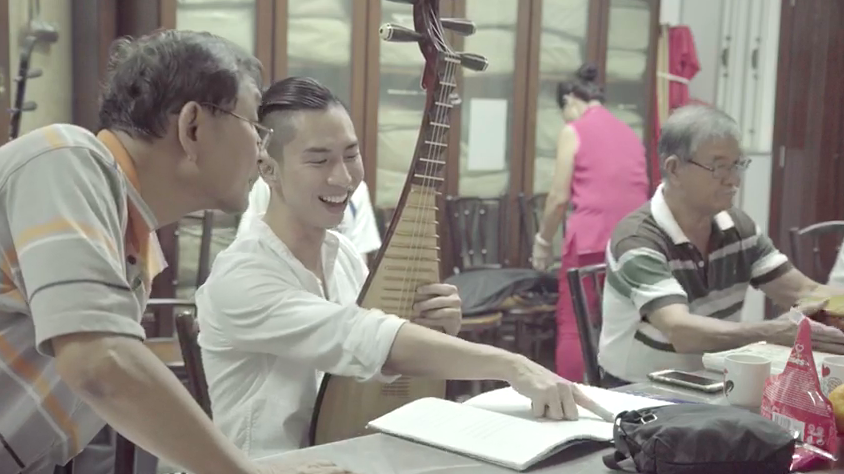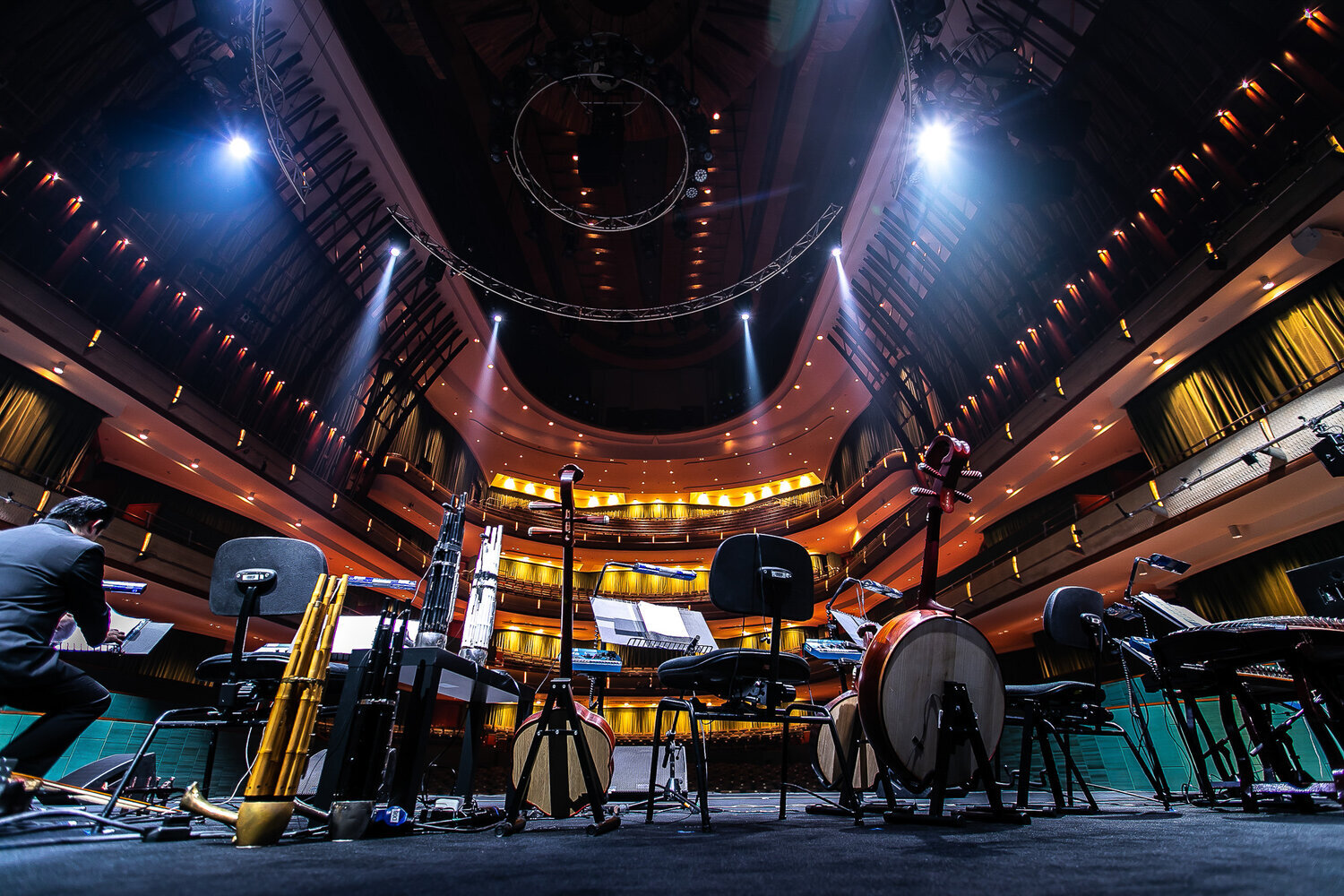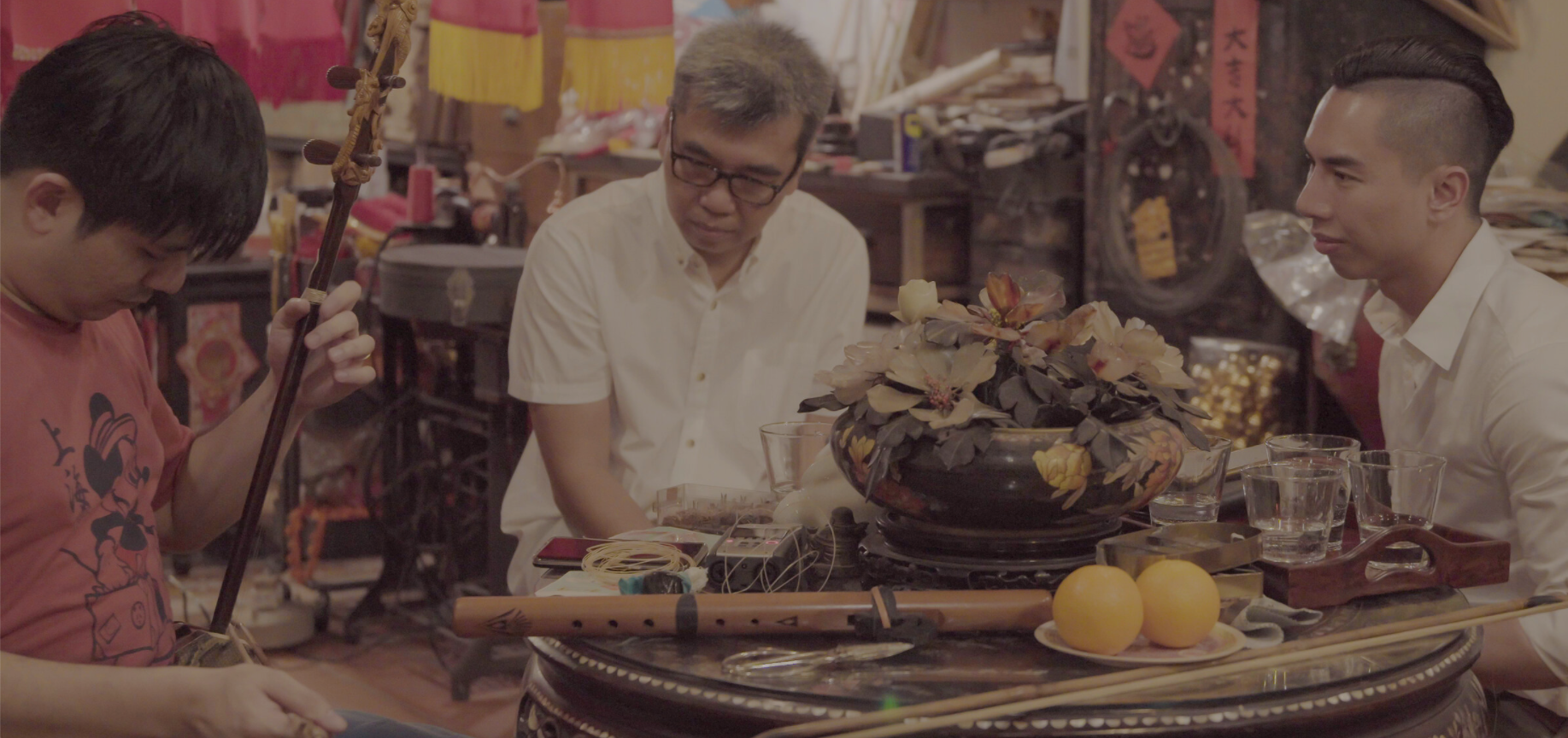The Music and Research
Nanyin
Hokkien is a widely spoken dialect that originated from the region of Southern Minnan. Hokkien music is most commonly known as Nanyin (southern orchestral music), which was added to UNESCO’s Intangible Cultural Heritage list in 2009. Traditionally, Nanyin is widespread among the Southeastern Coast of Quanzhou, Xiamen, Hangzhou and Taiwan – where Hokkien is widely spoken, and was brought into Southeast Asia with the immigration of the Mainland Chinese. Nanyin heavily utilises sizhu (silk and bamboo) musical instruments with the belief that a sizhu ensemble is able to produce a much more harmonious sound. There are four key instruments in Nanyin: Pipa, Dongxiao, Erxian (similar to the Erhu) and Sanxian.
Inspired by Nanyin
TRACING《寻迹》
Nanyin Pipa, Sheng, Pipa, Guzheng, Erhu, Gehu, Daruan, Guitar, Keyboard and Electronics
XIN ZAO BEH 《新走马》
Pipa, Guzheng, Daruan, Electric Guitar, Keyboard and Electronics
Cantonese Music
Originating from the Pearl River Delta. Cantonese music is mostly used as instrumental interludes during Cantonese opera performances and narrative singing. Cantonese music can be classified into three types, depending on their historical origin, musical structure and style, dramatic function and creative function. These three types are banghuang (arias), xiaoqu & paizi (short, fixed tunes) as well as shuochang (oratorical singing). The lead instrument of a Cantonese music ensemble is typically the Gaohu. Cantonese music ensembles also frequently feature instruments in the high orchestral register (similar to the soprano singers of a choir) due to their piercing sound and loud volume, as well as their close resemblance to the tone used by opera performers.
Inspired by Cantonese Music
HANG GAI 《行街》
Sheng, Cantonese Gaohu, Gehu, Cantonese Qinqin, Keyboard and Electronics
REMEMBERING 《难忘》
Sheng, Pipa, Cantonese Qinqin, Guzheng, Cantonese Gaohu, Gehu, Guitar, Keyboard and Electronics
DIPTYCH 《双重》
Yueqin, Guzheng, Keyboard and Electronics
CONTEMPORARY 《时代》
Sheng, Pipa, Yueqin, Cantonese Gaohu, Electric Guitar, Keyboard and Electronics
Waijiang Music
Waijiang music - also known as ruyue (scholar’s music) - refers to a genre of music that is popular within the regions of Jiangsu, Zhejiang and Huai River. A pre-Cultural Revolution genre of Chinese music, Waijiang music traditions can be traced back to the Guangdong province during the Qing dynasty. Back then, Waijiang music was performed purely for the purpose of intellectual entertainment. As such, it was consumed mainly by officials, elites and the literate. With the passage of time, however, the music tradition soon reached the Teochews and Hakkas living in nearby areas. While classified by most as a genre of Teochew music, Waijiang music can also be considered as a genre of Hakka music, due to the strong Hakka influence.
Teochew Music
Teochew music is widely regarded as an integral part of Lingnan culture and a treasure of China’s folk music. It is widespread in regions like Minnan, Yuedong, Guangzhou, Shanghai, Taiwan, Hong Kong and Macau, as well as some East Asian regions. Teochew music is largely based on the pentatonic scale (as used in most Chinese music forms) and adopts the ersi pu (“two-four system tablature”) notation system. Over time, the development of Teochew music saw variations of the pentatonic scale being used, which has become so progressively complicated that even music experts struggle to understand it.
Inspired by Waijiang & Teochew Music
MEMOIR 《回忆录》
Teochew Zheng, Teochew Pipa, Keyboard and Recording
FAR FROM HOME 《思乡》
Teochew Pipa, Sheng, Pipa, Teochew Zheng, Erhu, Gehu, Daruan, Guitar, Keyboard and Electronics
ONG AH ONG《唪啊唪》
Teochew Pipa, Sheng, Pipa, Erhu, Gehu, Daruan, Guitar, Keyboard, Electronics and Recitation
Hainanese Music
Hainan Bayin refers to the Hainanese eight sounds and is recognised by the Chinese government as an intangible cultural heritage. Bayin refers to the eight types of musical instruments made of materials cultivated in Hainan, such as coconut shells and Chinese rosewood. Bayin troupes usually perform at weddings and funerals and at the peak of Bayin's popularity, almost all Hainanese villages had their own Bayin troupe. However, in recent decades, its popularity has gradually waned.
Inspired by Hainanese Music
GU GU BO KI 《久久不见》
Sheng, Pipa, Guzheng, Gehu, Yehu, Daruan Electric Guitar, Keyboard and Electronics
Now available on all major digital and streaming platforms such as Apple Music and Spotify.
The Documentaries
Episode 1: The Founding Father of Singapore's Chinese Orchestras
In 1931, a group of Teochew immigrants established Thau Yong Amateur Musical Association out of a small shophouse located along Carpenter Street. For decades, Thau Yong’s music department was helmed by the late Mr. Yeo How Jiang, who also founded Singapore's first Chinese orchestra in 1959.
Up till his passing in 2017, Mr. Yeo imparted his vast knowledge of Waijiang and Teochew music to generations of music practitioners via oral communication. His legacy lives on in Thau Yong, which remains the only organisation in Singapore that presents both Waijiang and Teochew music ensembles.
Episode 3: The Craftsmen of Our Traditions
While the fight to preserve traditional Chinese music continues to gain traction, the art of instrument-making conversely remains underappreciated. For craftsmen like Jeffrey Eng and Toh Koon Swee, the challenge to find successors to inherit the skills and knowledge that they have painstakingly accumulated over decades has proven to be an uphill one.
Episode 5: Reimagining the Sounds of Our Chinese Forefathers
In 2016, The TENG Ensemble embarked on The Forefathers Project to uncover Singapore’s rich Chinese music heritage. After four years of painstaking research, the Ensemble is proud to present Heirlooms, a documentary-concert that will feature a repertoire of eight new commissioned works inspired by local Cantonese, Hokkien, Teochew and Hakka music traditions.
Episode 2: An Inheritance from Our Cantonese Forefathers
Cantonese opera is a traditional Chinese art form that originated from the Guangdong Province in China. A significant part of the art form involves singing accompanied by a combination of winds, string and percussion music.
Cantonese opera and music started to become popular in Singapore after an influx of Chinese migrants in the late 1800s. More than a century later, however, the future of this traditional art form has become endangered due to declining interest from the younger generation.
Under the leadership of Ms. Tse Yee Ling, Yi Sheng Cantonese Opera Troupe remains one of the few organisations that continues to preserve and promote Cantonese opera and music.
Episode 4: The Successors of Nanyin
While succession planning remains an uphill challenge in the traditional Chinese music scene, Siong Leng Musical Association stands out as one of the few organisations that is predominantly managed by a younger generation of practitioners. Despite the uncertain future of traditional Chinese music in Singapore, the younger members of Siong Leng valiantly continue to find ways of sharing their passion for Nanyin with their peers.




